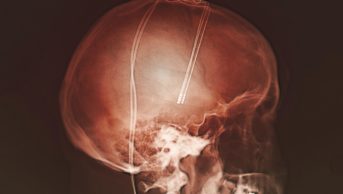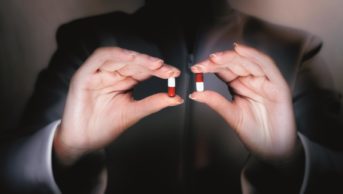
BSIP SA / Alamy
The infallibility of the double-blind randomised controlled trial has been challenged by researchers, who say results fail to reflect significant interactions between treatment and patient behaviour.
Writing in PLoS ONE
[1]
, researchers argue that some treatments can be more effective when patients alter behavioural patterns, such as exercise levels or food intake. And the impact of behavioural effects varies according to how strongly the patient believes that they are receiving the active treatment.
They say that clinical trials with a single probability of treatment are inadequate for estimating the additional benefit that arises from such interactions and propose the use of two-by-two blind trials, which randomise both treatment and behaviour by varying the probability of receiving active treatment across different participants. This allows the effects of treatment and behaviour, and the interaction between them, to be assessed.
The researchers, led by Sylvain Chassang, a professor of economics and public affairs at Princeton and collaborators — Erik Snowberg from Caltech, Ben Seymour from Cambridge University and Cayley Bowles from Harvard — conducted a meta-analysis of data from six blinded antidepressant trials in which participant-level data were available. The six trials included three for the selective serotonin re-uptake inhibitor paroxetine and three for the tricyclic imipramine. Three of the studies had a high probability of treatment (>65%).
The results provide strong evidence that the belief that their condition is being treated affects the behaviour of trial participants; in this case, specifically the decision to drop out of a trial. In the case of paroxetine, but not imipramine, there was an interaction between treatment and behavioural changes that enhanced the effectiveness of the drug — patients who were more confident that they were being treated changed their behaviour in a way that made the drug more effective (interaction effect 3.41, standard error 1.56; P<0.03).
“These data show that standard blind trials can fail to account for the full value added when there are interactions between a treatment and behaviour,” say the researchers.
Liz Morrell, policy analyst at the Centre for the Advancement of Sustainable Medical Innovation (CASMI), John Radcliffe Hospital, Oxford, says the study result is interesting but would be more compelling if it was reproduced in a two-by-two randomised trial.
“A key question for me is what this means in practice,” says Morrell. “Although in this example the trials potentially underestimated a useful interaction, we often see the opposite – that the ‘special’ conditions of a trial make it difficult to reproduce the outcomes in real clinical practice.”
Trial patients are motivated, and may also behave differently because they know they are under observation, known as the ‘Hawthorne effect’.
“In practice, although patients know for certain that they’re getting the treatment, compliance with dosage or other behavioural suggestions can be more challenging,” says Morrell. “Studies that can separate out the different sources of effect would help to support clinicians and patients to get the most out of the drugs they use.”
In their meta-analysis, the researchers highlight behavioural changes, “whereby a patient’s optimistic belief in the therapeutic benefit of a treatment may translate into a potentially observable change in their daily activity”.
But, they concede that placebo effects can manifest physiologically. For example, in chronic pain, placebo effects involve activation of endogenous analgesic (opioidergic) mechanisms. In Parkinson’s disease, they involve activation of the dopamine system. In both cases, placebos affect the molecular mechanisms targeted by pharmacological agents.
There is also growing evidence pointing to neurally-induced placebo-dependent modulation of inflammatory responses, likely to be clinically relevant for psoriasis and asthma, and other immunological conditions. Physiologically-mediated placebo effects are also present in ulcer medicines (H2 antagonists and proton pump inhibitors) and cholesterol lowering medicines (statins), the researchers say.
“In all these cases, two-by-two trials can help evaluate plausible interaction effects between treatment and the patient’s physiological response to anticipation of treatment,” they write. “In addition, in a number of these domains, especially depression and pain, recent research has identified nocebo effects. These effects are often associated with clinician comments that emphasise the side effects of treatments.”
When employing two-by-two trials, the researchers underline the importance of obscuring from clinicians a patients’ probability of treatment as well as whether they will actually receive it. This would ensure both types of trial participant are subject to the same emphasis on possible side effects in discussions with their doctor.


